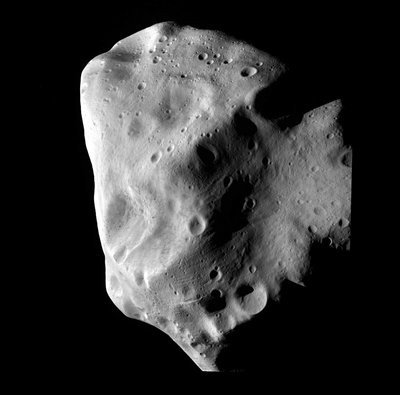PARIS, Oct. 27 (UPI) -- Data from a European spacecraft study of a distant asteroid show it is a primitive body left over as planets were forming in the solar system, astronomers said.
The European Space Agency's Rosetta spacecraft flew by the asteroid Lutetia in July 2010 and scientist have finished analyzing the data gathered during the brief encounter, a release from ESA headquarters in Paris said Thursday.















